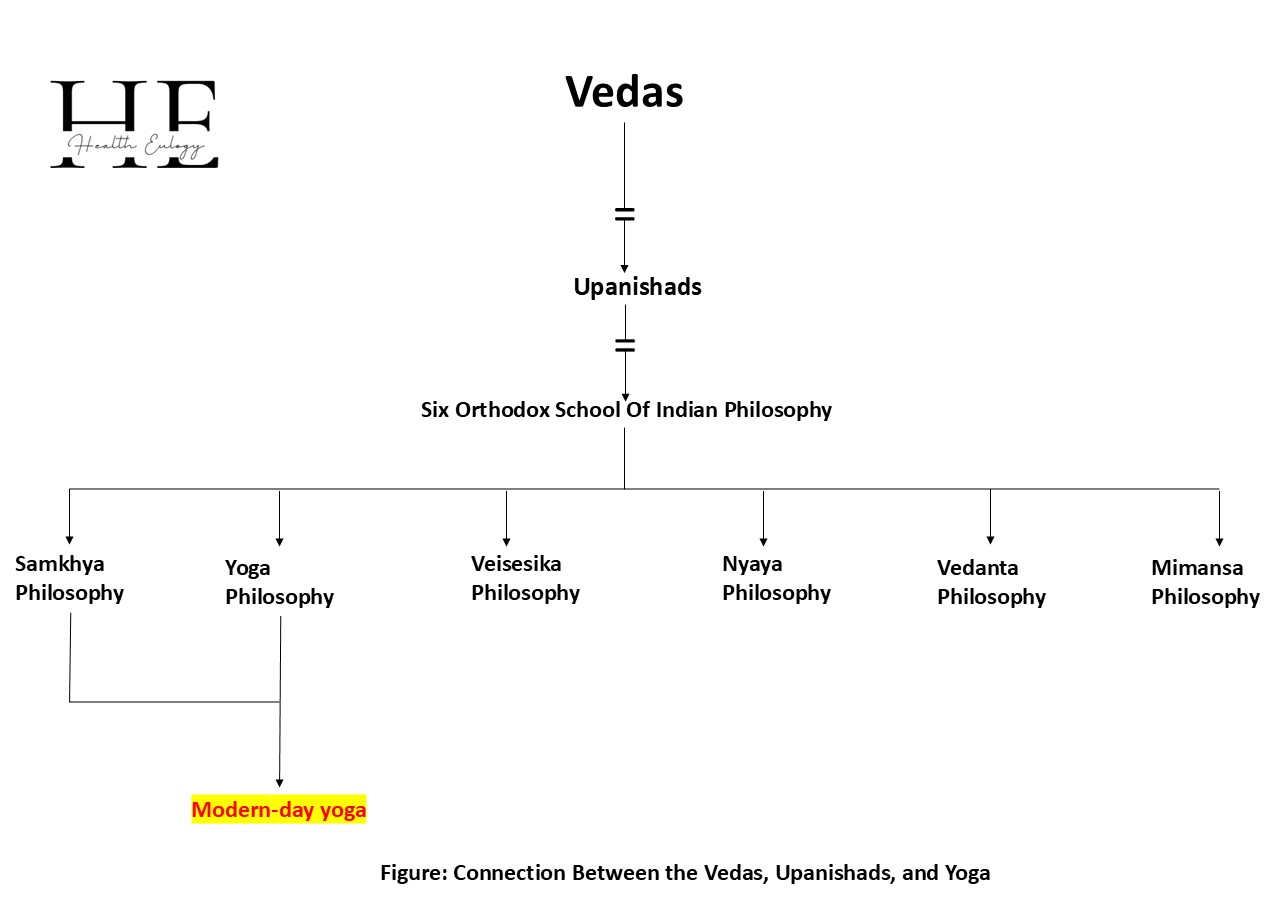Yoga is the process through which control of the body, mind, and soul becomes possible.
One can attain moksha (freedom from suffering) through the consistent practice of yoga.
Origin of Yoga
Yoga has been prevalent in India since ancient times.
In yoga philosophy, it is believed that Lord Shiva is the founder of yoga, and for this reason, he is called Adiyogi. Goddess Parvati represents divine feminine energy and supreme power, and this power is known as Kundalini Shakti. Archaeological evidence, such as the Pashupati Seal discovered at the Indus Valley Civilization site of Mohenjo-Daro, depicts Lord Shiva in a meditative posture. This seal also links Shiva with yoga.
The Vedas and Upanishads are closely linked to yoga, making them an essential part of it. Therefore, a basic understanding of the Vedas and Upanishads is very important in the field of yoga.
The Vedas and Upanishads
In Hinduism, the Vedas are very sacred texts. The word ‘Veda‘ means “knowledge.” This knowledge primarily refers to spiritual wisdom. The Vedas are divided into four parts:
- Rig Veda
- Sama Veda
- Yajur Veda
- Atharva Veda
The Rig Veda is the oldest of all, and it contains hymns and mantras dedicated to various deities and nature. The Sama Veda is a collection of melodies and chants, and Indian music originates from it. The Yajur Veda contains rituals and ceremonial practices. The Atharva Veda includes knowledge of medicine, magic, and daily life.
Thus, the knowledge derived from the Vedas is extremely valuable for practices like yoga, meditation, and various other yogic processes.
The Upanishads are philosophical texts based on the Vedas. The Upanishads are often called ‘Vedanta’ because they emerged at the end of the Vedic period.
Six Orthodox Schools of Indian Philosophy (Sad-Darshanas)
The Vedas and Upanishads gave rise to the six classical schools of Indian philosophy, known as the Sad-Darshanas. These include:
| Darshana | Subject | Sage |
| Samkhya philosophy | Emphasis on two eternal realities- Purusha (self, soul or mind) and Prakriti (nature) | Kapila |
| Yoga philosophy | Yogic techniques that control Purusha (self, soul or mind) or physical and psychological activities | Patanjali |
| Nyaya philosophy | Logic or reason | Gautama |
| Vaisheshika philosophy | Atomic view of existence | Kanada |
| Vedanta philosophy | Brahma sutras | Vyasa/Badarayana |
| Mimamsa philosophy | Solution of problems | Jaimini |
Among these, the Samkhya and Yoga philosophies are significant for yogic practices. Samkhya philosophy provides the theoretical framework, while Yoga philosophy offers practical techniques.
Yoga Philosophy and Patanjali’s Yoga Sutras
Sage Patanjali organized yoga in his famous work, the Yoga Sutras. This text outlines the principles and practices of yoga, including the eight limbs of yoga (Ashtanga Yoga):
- Yama: self-control.
- Niyama: discipline.
- Asana: Physical postures or poses.
- Pranayama: Regulation and control of breath.
- Pratyahara: Withdrawal of the senses.
- Dharana: Concentration.
- Dhyana: Meditation.
- Samadhi: State of oneness.
These practices help individuals control their body and mind.
Many modern books based on Patanjali’s Yoga Sutras are available on Google Books.
Prominent Figures in Yoga
Several spiritual leaders have played a pivotal role in popularizing yoga globally. Notable among them are:
- Swami Vivekananda wrote important books like Karma Yoga, Bhakti Yoga, Raja Yoga, and Jnana Yoga.
- Sri Aurobindo
- Swami Sivananda
- Maharishi Mahesh Yogi
- Baba Ramdev
- B.K.S. Iyengar
- Sadhguru Jaggi Vasudev
Conclusion
In modern times, yoga is considered a powerful method for controlling the body, mind, and soul. Through yoga, it is possible to effectively manage and reduce stress, depression, and many other health problems. However, it is important to remember that while some yoga practices are very simple and can be done by everyone, others are quite difficult and may cause harm if not performed correctly. Therefore, it is always advisable to practice yoga under the guidance of a trained yoga instructor or professional.
Kanka Adhikary is the creator behind Health Eulogy, blending a strong academic foundation with a passion for health education. With a B.Sc in Medical Physiology, where he earned a University Silver Medal from the University of North Bengal, and additional qualifications in education (D.Ed and B.Ed), Kanka brings over 7 years of teaching experience in Medical Physiology and Biology.
In addition to his academic and teaching expertise, Kanka has a special interest in yoga and its impact on human health, integrating this knowledge into his educational content.
